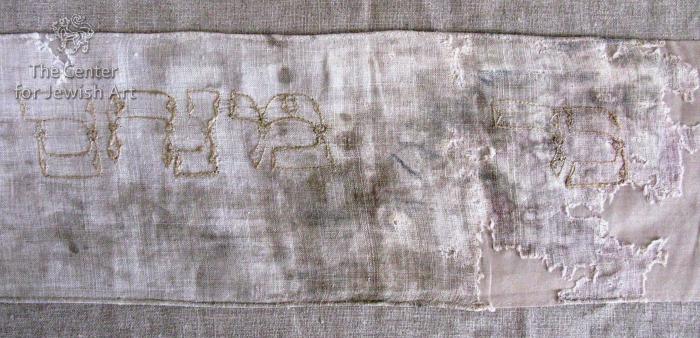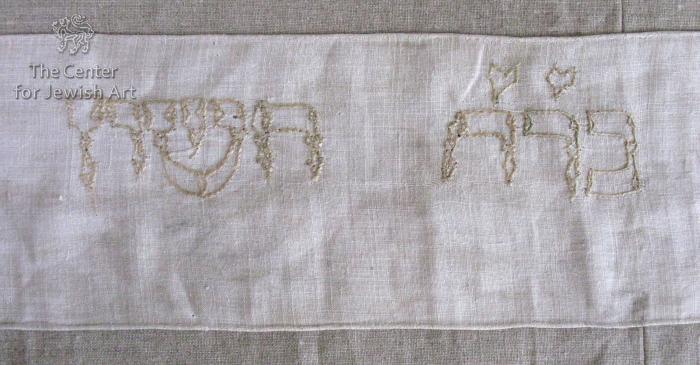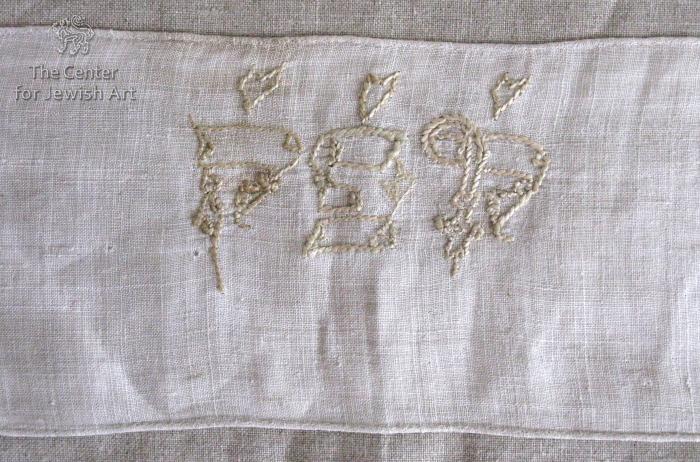Obj. ID: 39267 Wimple (Torah binder), Westheim bei Hammelburg, 1590

sub-set tree:
The following description was prepared by William Gross:
The custom of the Wimpel or Torah Binder stretches back some 500 years at least in the world of classic Ashkenaz, the German speaking lands. The cloth which held the child at the time of his circumcision, almost always of linen, was cut into strips and sewn into a long textile. On this lengthy cloth was embroidered or painted a formulaic inscription, blessing the child and wishing that he grow up to "the Torah, the Chupah and good deeds". The beginnings of the custom were executed on linen cloth with silk embroidery. In the late 18th century the custom passed to painting on the textile with substantial illustration, although late examples of embroidered Wimpels do exist. Wimpels in the Gross Family Collection have their origin from Germany, Denmark, the Czech lands, Luxembourg and Alsace. The Wimpel served as a Torah Binder, being brought to the synagogue for use on the child's first birthday, his Bar Mitzvah and the Shabbat Chatan before his marriage.
This Wimpel is the oldest Wimpel known today. Its origin is from the genizah of Wertheim in Bavaria. This example is missing a small part at the beginning with the first name of the child. This early example contains a formulaic inscription which differs from the later standard inscription. In addition, there are large spaces between many of the words, quite different from the later standard in which the words are crowded one against the other. The letters are minimally decorated, basically relying on the texture of the decorative stitch which is used for outlining the letters on the Wimpel.
Inscription: ??? bar Menachem Bachrach









